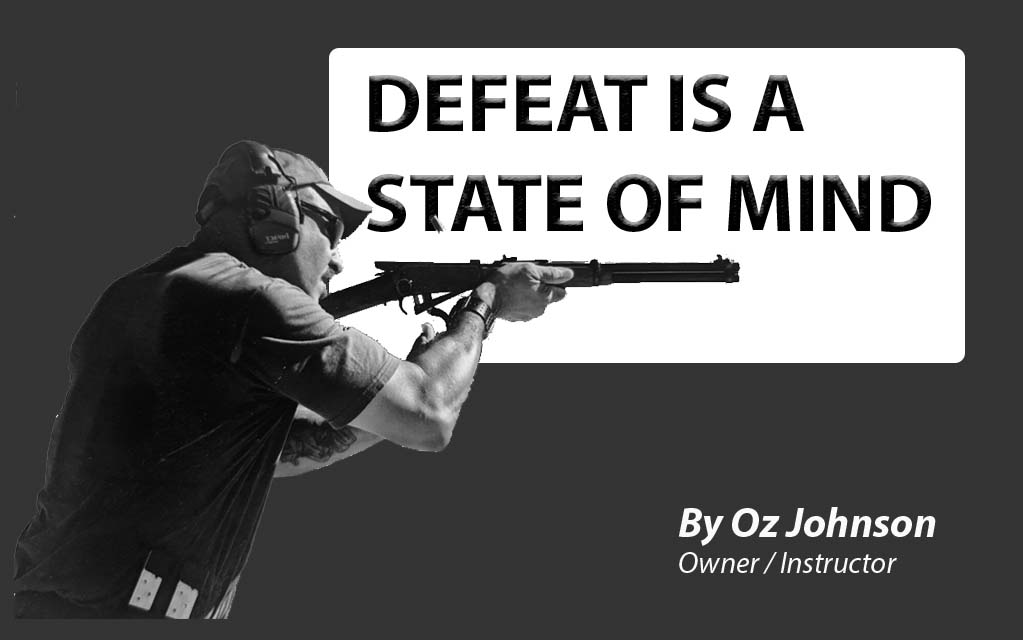How do you rank your gun handling skills?.
I’ve written in depth about various ways a person should train with their firearms if they are using them for self-defense purposes. Real life practical training is what you need to prepare for a self-defense scenario.
I incorporate many training techniques when I teach including drills, shooting behind barriers, shooting on the move, and shooting from different positions to name a few. Something that many instructors leave out of their training is challenging the thought process of the students when they are performing drills.
When and if you are faced with a deadly situation, your mind and body will react in ways not experienced during normal everyday events. I’m sure many of you have heard of the fight or flight reaction that occurs when someone faces fear. There are many other stages in between fight or flight. You may freeze, get tunnel vision, or lose your ability to think clearly. There are many effects that fear can induce on the human body.
When handling a firearm during this fearful event, all the above-mentioned effects can work against your chance of survival. During advanced courses I try to introduce these types of effects into the training. It can be done with physical activity just prior to the drill and with verbal specifics about the scenario given to the student prior to the drill. Physical activity raises the heart rate and weakens muscular body functions, and the scenario details force the student to think about the proper reaction to the scenario.
No matter what situation you are faced with, you have to continue processing what you’re presented with. The presentation of different information is constant and the processing needs to occur quickly. It could be the difference of shooting someone that’s pointing a gun at you to firing after they have dropped the gun and raised their hands in the air. Continuous processing of the scenario is necessary and adjusting your actions to what you’re presented with.
Here’s a simple, but very serious review of one of the actions I see students not processing on a continuous basis. If you are a shooting enthusiast you’ve probably heard this a thousand times…. muzzling and finger along the frame. Muzzling is when you’ve pointed the barrel of your firearm at something you are not intending on shooting. Finger along the frame is where your finger should be on your firearm until you consciously make the decision to fire.
These two very important and basic firearms safety rules are violated on a regular basis. These two rules should play a major part in the continuous processing of the situation or scenario. These two rules need to be practiced at all times or someone will get hurt. You cannot let your mind get distracted and forget about these rules, they are the foundation of safe weapon handling. A firearm is not a dangerous tool, how untrained people handle them is what makes them dangerous. Or even better said, poor handling of a firearm makes a dangerous person.
Not muzzling other people and not having your finger on the trigger when you are not preparing to fire the weapon needs to be practiced constantly. It needs to be stamped on your brain. In addition, I tell all my students, everyone on the range is a range safety officer. This means if you see a safety violation, speak up or call a cease fire and bring the violation to the instructor’s attention. No matter where I am at, if I witness the unsafe handling of a firearm, I will bring it to the handler’s attention. I am not only teaching them a valuable skill, but I could be preventing the injuring or the killing of another person.
Another firearms safety rule is “Treat every firearm as if it were loaded.” Meaning even if you or someone else knows the firearm is unloaded, all safety rules still apply.
Learn the laws of gun safety, mindset & more at our next CCW class being held at the American Legion Post 34 in Cave Creek on Saturday, December 9th.
NEVER STOP TRAINING
[email protected]
Visit our Website: JohnsonGroupTAC.com
Oz Johnson/Lead Instructor, NRA Certified
Karin Johnson/Operations Manager
602-410-7355





